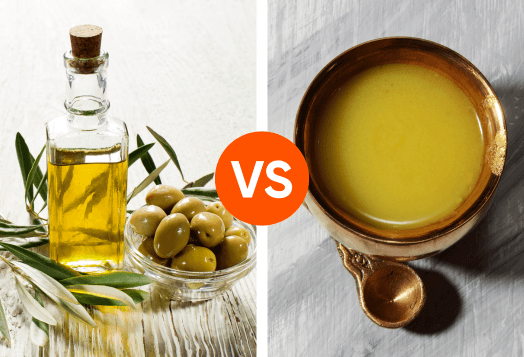
Balancing growth and safety is every investor’s dream, and that’s where hybrid mutual funds step in. By blending equities with debt, they offer the best of both worlds. But not all hybrids are the same, and understanding the differences is key to effective investing.
Different types of hybrid mutual funds cater to different risk profiles. The real question is: which one matches your investment style?
What Are Hybrid Mutual Funds?
At its core, the meaning of hybrid funds lies in blending two major asset classes, equity and debt, into a single portfolio as part of various types of mutual funds in India. Equities bring the potential for higher long-term returns, while debt instruments add a layer of stability and help reduce market volatility.
By combining the two, hybrid mutual funds create a balanced approach that appeals to investors looking for both growth and safety.
Why Invest in Hybrid Mutual Funds?
1. Portfolio Diversification: Hybrid funds diversify across equities, bonds, and sometimes even other instruments like gold, making them a smart money move for investors. This variety helps spread risk, cushioning the impact if one asset underperforms.
2. Moderate Risk Profile: Unlike pure equity funds that can be highly volatile or debt funds that may offer lower returns, hybrid funds strike a middle ground. Ideal for investors with a moderate risk appetite who want neither extreme highs nor lows.
3. Potential for Income + Growth: Debt instruments in hybrid funds may generate steady income, while equities provide opportunities for capital appreciation. Together, they deliver a mix of regular returns and long-term wealth creation.
4. Flexibility in Asset Allocation: Hybrid mutual funds give fund managers the flexibility to adjust the balance between equity and debt depending on market conditions. This dynamic approach enables the fund to respond more effectively to changing economic scenarios, making it a versatile investment option.
Types of Hybrid Mutual Funds
Equity-Oriented Hybrid Funds
These funds put most of the money (65% to 80%) into stocks and the rest into safer debt options like bonds.
They are good for people who want long-term growth and don’t mind some ups and downs in the market. Since they are equity-heavy, they can grow faster but also carry higher risk.
Debt-Oriented Hybrid Funds
In these funds, most of the money (60% to 90%) goes into debt like bonds, and only a small part into stocks.
They are safer and give more stable returns, which makes them a good option for conservative investors or those looking for regular income instead of high growth.
Balanced Advantage Funds
Also called dynamic asset allocation funds, these change their mix of stocks and debt automatically depending on the market. If the market is high, they shift towards debt; if it’s low, they move towards stocks.
This makes them a smart choice for people who want their investments managed automatically without taking too much stress.
Aggressive Hybrid Funds
These funds invest heavily in stocks (around 65% to 80%) and the rest in debt. They are for risk-takers who want higher returns and are okay with market ups and downs.
Perfect for long-term goals like retirement or wealth creation.
Arbitrage Funds
These are a special type of hybrid fund. They earn money by taking advantage of price differences in the stock market and its derivatives. While they are officially equity funds, they act more like debt funds in terms of safety.
Many investors use them for short-term investments when they want low risk and better tax treatment than debt funds.
Monthly Income Plan Hybrid Funds
Also called MIPs, these are designed to give regular payouts. Most of the money goes into debt for safety, with a small portion in stocks for growth.
They are popular with retirees or conservative investors who want a steady income, though the income is not guaranteed every month.
How to Choose the Right Hybrid Fund for Your Investment Style
1. Assess Your Risk Appetite
Your comfort with market ups and downs should guide your choice:
Conservative investors → Opt for debt-oriented hybrid funds for stability and steady income.
Moderate investors → Balanced or dynamic allocation funds provide a mix of growth and safety.
Aggressive investors → Equity-oriented or aggressive hybrid funds offer higher growth potential but with increased risk.
2. Review Fund Performance
Look beyond recent gains. Analyse historical returns, consistency, and risk-adjusted performance to gauge how the fund handles market fluctuations.
3. Evaluate the Fund Manager’s Expertise
A seasoned fund manager can make a significant difference. Their experience ensures smart asset allocation and timely adjustments to maximise returns.
4. Check Expense Ratios and Fees
Even small fees can eat into long-term profits. Compare the expense ratios across similar funds to make cost-effective choices.
5. Understand the Asset Allocation Strategy
Dive into how the fund splits its equity and debt investments to choose mutual funds aligned with your goals. Make sure the allocation aligns with your financial goals, investment horizon, and risk tolerance.
Top 10 Hybrid Mutual Funds to Consider
Here’s a closer look at some popular hybrid mutual funds in India that cater to different investment styles and risk appetites.
1. HDFC Hybrid Equity Fund – Equity-oriented hybrid
Primarily equity-driven with a portion in debt, this fund targets long-term growth while reducing volatility. Suitable for investors seeking wealth creation over a medium to long-term horizon.
2. ICICI Prudential Equity & Debt Fund – Aggressive hybrid
With a higher allocation to equities, this fund offers the potential for higher returns while maintaining some debt for risk management. Ideal for investors willing to accept moderate market fluctuations for higher growth.
3. SBI Equity Hybrid Fund – Balanced equity-debt approach
A classic choice for moderate investors, this fund maintains a balanced mix of equity and debt. It aims for steady returns while managing risk efficiently.
4. Mirae Asset Hybrid Equity Fund – Growth-focused hybrid
Focused on equity growth, this fund diversifies across sectors and companies, ensuring a mix of stability and long-term performance. Perfect for investors eyeing wealth accumulation over 5–10 years.
5. Kotak Equity Hybrid Fund – Consistent long-term performer
Known for its consistent performance, this fund carefully balances equity and debt exposure. Suitable for investors who prefer predictable growth with moderate risk.
6. Axis Equity Hybrid Fund – Moderate risk profile
Designed for investors with a medium risk appetite, this fund provides a reliable mix of equity growth and debt stability, making it a solid choice for balanced portfolios.
7. Canara Robeco Equity Hybrid Fund – Diversified allocation
This fund spreads investments across multiple sectors and instruments, offering diversification benefits while maintaining a balance between risk and returns.
8. Aditya Birla Sun Life Equity Hybrid ’95 Fund – Legacy hybrid scheme
One of the oldest hybrid schemes in India, it combines long-standing fund management expertise with a prudent equity-debt allocation. Ideal for investors who value legacy and stability.
9. Nippon India Equity Hybrid Fund – Aggressive equity allocation
Focused on growth, this fund has a higher equity component, suitable for investors comfortable with market volatility and seeking long-term capital appreciation.
10. Edelweiss Balanced Advantage Fund – Dynamic asset allocation
This fund actively adjusts its equity and debt exposure based on market conditions. Ideal for investors who prefer a fund that adapts automatically to changing markets.
Note: Returns, NAV, and risk profiles vary. Always review the latest performance data before investing and consider consulting a financial professional for personalised guidance.
Tips for Maximising Your Hybrid Fund Investments
1. Start with SIP for Consistency
Investing through a Systematic Investment Plan (SIP) helps build wealth steadily while reducing the impact of market volatility.
It ensures disciplined investing and benefits from rupee cost averaging, ideal for both beginners and experienced investors.
2. Diversify Across Fund Types
Spread your investments across equity-oriented, debt-oriented, and balanced funds with an advantage.
Diversification balances risks and can improve overall returns, even if one fund underperforms.
3. Review Your Portfolio Regularly
Check your portfolio periodically to track performance and rebalance if needed while understanding tax on mutual funds. Adjusting equity-debt allocation ensures alignment with your risk tolerance and market changes.
4. Align Investments with Financial Goals
Match fund types to your objectives. Use aggressive hybrids for long-term growth and debt-heavy or monthly income hybrids for short-term stability and regular income.
Striking the Right Balance
Hybrid mutual funds provide an opportunity to pursue growth while maintaining stability. By selecting the type that aligns with your risk profile, monitoring performance and costs, and investing consistently through SIPs, you can build a resilient portfolio. With periodic reviews and guidance from financial consultants, hybrid funds can support your long-term financial goals with confidence.




